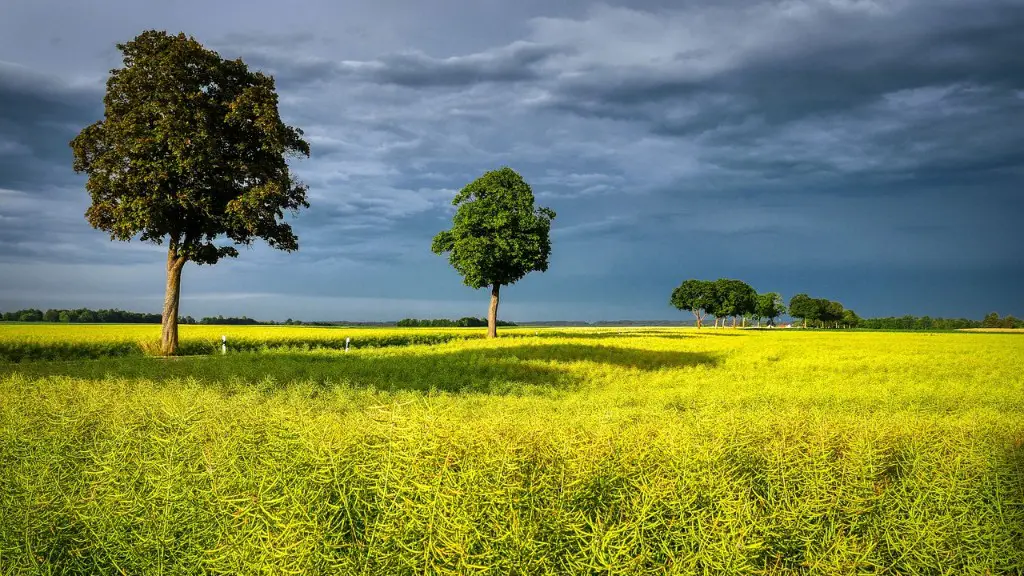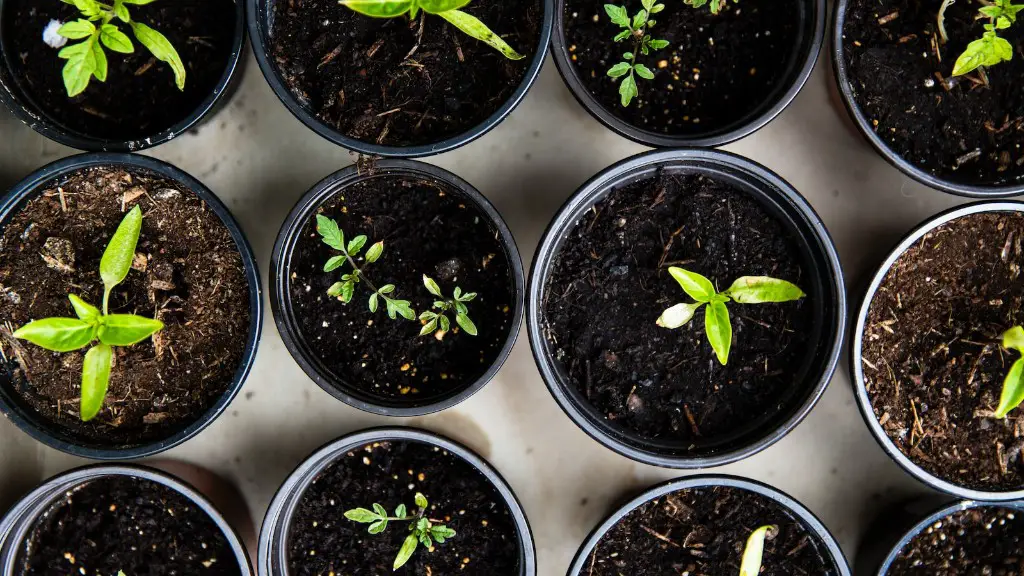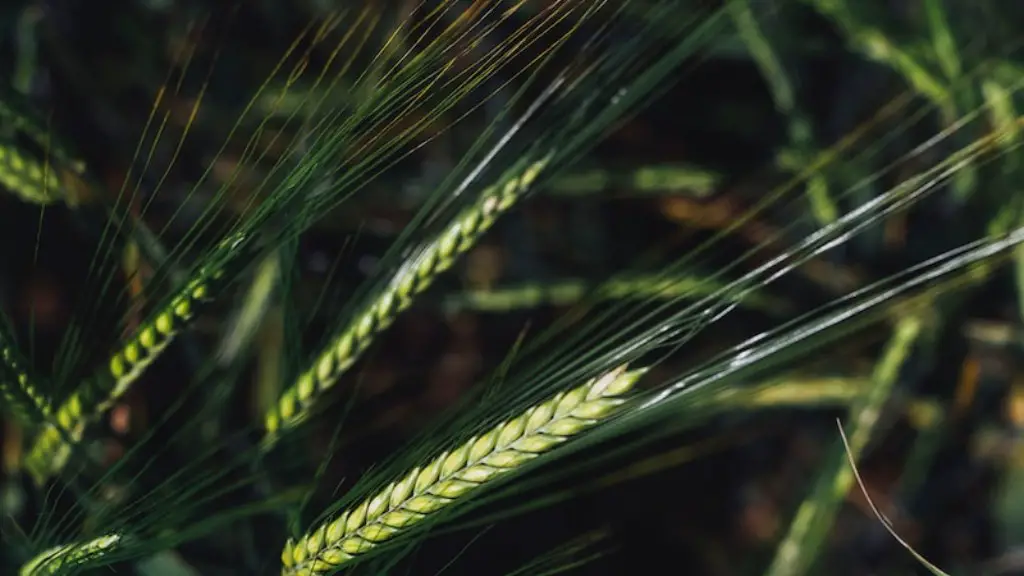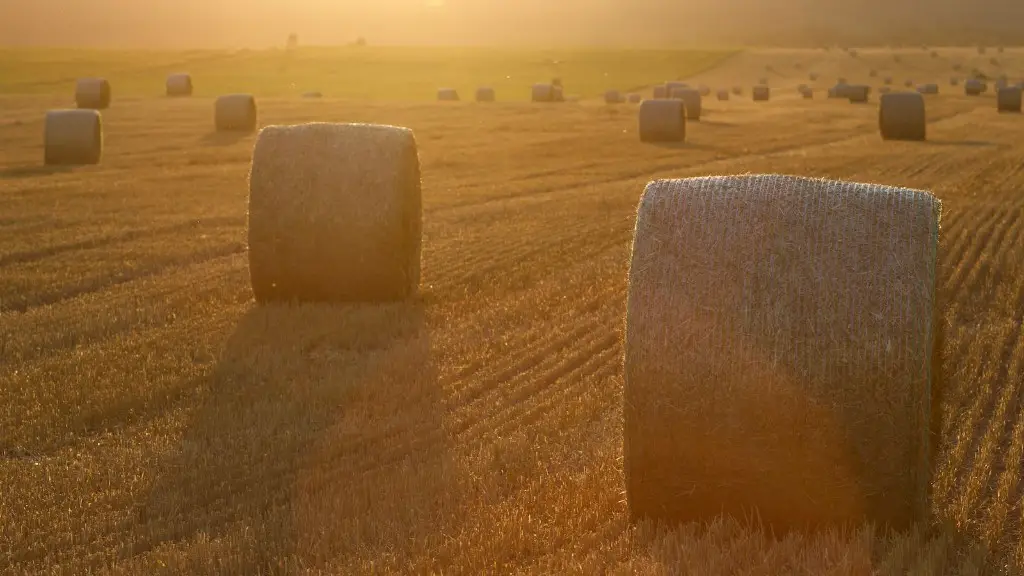Global Warming is one of the most pressing issues facing humankind today. It has a wide-reaching impact on the environment, on economies, and on societies. One of the impacts of global warming that is often overlooked is the impact it has on agriculture. This article will explore the effects of global Warming on agriculture and how farmers and agricultural organizations can respond to mitigate these impacts.
One of the main effects of global warming on agriculture is warmer temperatures. This can lead to reduced crop yields, as higher temperatures can lead to shorter growing seasons, reduced soil fertility and an increase in pests and diseases. Furthermore, warmer temperatures can reduce the availability of water for irrigation, leading to increased levels of water stress. Additionally, in coastal regions, rising sea levels resulting from global warming can lead to increased salinization of agricultural land, damaging soil and reducing crop yields.
Climate change-related extreme weather events such as floods, droughts and heatwaves, also have a major impact on agriculture. Droughts and heatwaves can reduce soil moisture and impede crop growth, while floods can damage crops and infrastructure and spread disease. In addition, extreme weather events can lead to higher levels of carbon dioxide and methane in the atmosphere, thus further exacerbating global warming.
Finally, global warming affects agricultural practices, such as crop cultivation, pesticide use, and tillage techniques. Traditional methods of crop cultivation may no longer be suitable or efficient in the face of altered climatic conditions, meaning farmers may have to adopt different methods of crop cultivation. Additionally, changes in temperatures and moisture levels may also affect the types of pests and diseases that affect crops, leading to increased use of fertilizers and pesticides.
In light of the serious impacts of global warming on agriculture, it is essential that Farmers and agricultural organizations begin to prepare for its effects. This could include developing strategies for resilience, adapting agricultural practices to the changing climatic conditions, and investing in infrastructure to protect against extreme weather events. In addition, more accurate and timely weather forecasting could also help minimize the impacts of global warming on agriculture.
Long Term Effects
In addition to the immediate impacts of global warming on agriculture, there are also long term effects to consider. In particular, soil degradation resulting from land mismanagement and the overexploitation of agricultural resources such as water and fertilizer could further reduce crop yields in the long term. As such, it is important that steps are taken to protect agricultural land and resources and to ensure land is managed responsibly.
Furthermore, global warming may also create new pests, diseases and weed species in previously unaffected regions, which could further reduce crop yields. As such, it is important that farmers and agricultural organizations monitor changes in pests, diseases and weed species and undertake appropriate measures should any occur.
Finally, global warming may also increase drought and heat stress and reduce soil moisture, which could have a detrimental effect on soil microbial activity. This could reduce the ability of the soil to produce nutrients necessary for healthy crop growth. Additionally, changes in climatic conditions may also lead to changes in the types of crops that can be grown in an area, requiring farmers to adopt different cropping and cultivation practices.
Economic Impacts
The economic impacts of global warming on agriculture are far reaching. The increase in extreme weather events, for example, can lead to decreased crop yields, which can have negative economic impacts on both farmers and agricultural organizations. In addition, a decrease in soil fertility and soil moisture, as well as changes in climatic conditions, can also lead to decreased crop yields, thus affecting agricultural profits.
Furthermore, the increased temperatures and reduced soil moisture associated with global warming can reduce the quality and quantity of the food available for sale. This can lead to food shortages and an increase in food costs, both of which have an economic effect. Finally, the effects of global warming on crop cultivation and soil health can lead to an increase in the cost of farming, thus further impacting economic performance.
Political Impacts
The political impacts of global warming on agriculture cannot be underestimated. Changes in climatic conditions, for example, can lead to a shift in crop production and increased competition between countries over resources. This can lead to tensions between countries, as they strive to maintain their agricultural advantage. In addition, the increased cost of production due to global warming can lead to higher prices for agricultural products, resulting in issues of food security, poverty and inequality.
Furthermore, the impact of extreme weather events associated with global warming has the potential to increase migration, as rural communities are forced to leave their homes due to changes in climatic conditions. This can lead to increased pressure on resources, particularly in urban areas, and can lead to further political tensions and instability.
Finally, global warming can reduce crop yields and lead to food shortages, which can have serious political implications. This is particularly true for developing countries that are more reliant on food imports, as decreased crop yields in these countries can lead to higher prices for food and increased food insecurity.
Environmental Impacts
The environmental impacts of global warming on agriculture are also significant. Warmer temperatures as a result of global warming can lead to increased levels of drought, thus reducing soil moisture and depleting surface and groundwater resources. Furthermore, the increased use of fertilisers and pesticides as a result of global warming can lead to higher levels of soil and water pollution.
In addition, the overexploitation of agricultural resources can lead to land degradation, deforestation, soil erosion and desertification. This can reduce the quality of the land and make it no longer suitable for agricultural use in the future. Furthermore, land degradation associated with global warming can lead to increased levels of carbon dioxide and methane in the atmosphere, thus exacerbating global warming.
Finally, global warming can lead to changes in the type and availability of crops, resulting in the loss of biodiversity. For example, warmer temperatures may facilitate the spread of new pests, diseases and weed species, resulting in the loss of native species. This can have lasting impacts on ecosystems and biodiversity, further disrupting the balance of nature.




